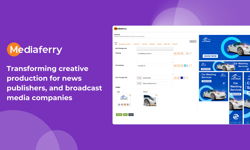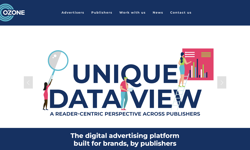
The media pack remains a pivotal document in the sales aid arsenal. From it will be derived email copy, presentation content, contract details, and more. For your prospects and customers, it is often the foundation stone of your relationship together. Why then, are so many media packs left to go out of date, littered with spelling, punctuation and grammatical errors, and often don’t include new product details or the latest audience statistics? Is this really how you would choose to portray your company, products and services?
The current state of a media pack can often be an early indicator of the health and viability of a publishing or event brand. You could say, a healthy media pack equals a healthy brand. With this in mind, we would like to share a few pointers that we hope will help you to give your media pack a quick health check.
A healthy media pack equals a healthy brand.
The basics
A good media pack isn’t important, it’s critical. Whether your media pack is only available on request or readily available via your website, we believe that, as a standalone document, it should be able to fend for itself. In the event that you are dealing with a client directly, via an agency, or a mix of both, it’s all too easy for a covering email and the attached media pack to become separated, especially when being passed from gatekeeper to intermediary to decision-maker, and so on. In an interconnected, 24/7/365 world, it’s just as likely that a prospect will access your product information while your sales team are tucked up in bed, so you’d better make it count! Whether you are looking to create a media pack for the first time, or refreshing an existing one, here are a few basic tips that we have found to be useful when putting together media packs for our clients:
- Approach. More concise than verbose – you’re not writing a novel – the media pack should seek to convey the features and benefits of your products / services succinctly from beginning to end. Start with the history, pedigree and context, build through the product details, reach and engagement until finishing with the rate card / package options. Be sure to include the salient points, try to address common objections upfront, provide examples and highlight anything that has changed. If you don’t adequately demonstrate the value, you will have failed to substantiate the price.
- Design. Use a professional designer. The effort you have put in to ensuring that your media pack copy is well-written, free from typos, punchy etc, can be totally undone by poor design and deliverability issues. A professional designer will help you to ensure that the media pack is uncluttered, flows logically, makes good use of appropriate images, and uses the right graphics to convey important data. A good designer will also be able to advise you on the best format and size for your media pack. For example, you may decide on an alternative format depending on whether you intend to print it for mailing or conference distribution, versus using it solely for online or email use.
- Rate card. If it’s not in the media pack, your customers won’t know they can buy it! If you come up with a new product or service, update the media pack. If the details of an existing product or service have changed (eg platform, visuals, price, reach, engagement stats etc), update the media pack (don’t forget to replace the previous version in all the locations it is available!). Setting prices is a subject for another time but, as a rule of thumb, we advocate creating a rate card that has something for everyone. Setting exorbitant prices may, at first, appear to be the answer to your sales prayers but, if nobody is prepared to pay them, it’s not a realistic rate card, it’s fantasy! Your entry-level offering should aim to be something that provides great value for money, and that the majority of your prospects / customers can afford to purchase / renew. From there, intelligently build the rate card with up-sell opportunities until you reach the big-ticket items. Make sure you support each product equally with reach and engagement stats, appropriate visuals, examples of satisfied customers / partners etc – this level of detail will count when it comes to making that all-important purchasing decision.
If you don’t adequately demonstrate the value, you will have failed to substantiate the price.
Who cares?
Given that a media pack ultimately represents the combined efforts of all internal teams, it’s only natural they would want to have a hand in its success. While the sales team may choose to take overall ownership of the media pack, stakeholders in marketing and editorial / content will play an important role in supplying up-to-date product information and statistics, on an ongoing basis. In our experience, an editor or journalist can often be a welcome ally when it comes to finessing media pack copy.
Media packs should be reviewed at least quarterly – end of! Why? Because something will have changed that needs to be updated… social media reach, podcast stats, the awards have moved online, you now sell video etc. Having a small team of invested stakeholders will ensure these changes are made quickly. Also, making sure that the media pack includes practical details like publication / event deadlines, confirmed headline editorial / speaker information, artwork and production specs, location details, contact information etc, will save your entire team time down the line, as prospects begin to convert into customers.
Media packs should be reviewed at least quarterly – end of!
Quick health check
A little bit of fun. In no particular order, does your media pack (tick as appropriate)…
[ ] Have this year’s date on it?
[ ] Show / link to examples of all commercially available products / services?
[ ] Include details of your social channels and hashtags?
[ ] Make clear whether or not the prices shown include VAT?
[ ] Exclude the details of products / services you no longer offer?
[ ] Set out the headline publication / event schedule with clear deadlines?
[ ] Show up-to-date testimonials from readers / visitors / advertisers / sponsors / exhibitors / speakers / contributors / partners?
[ ] Come to less than a 5MB file for email / web use?
[ ] Outshine your competitor’s media pack? :)
In a competitive market, it’s important to differentiate your products and services from those of your rivals. A well-written, concise, uncluttered, well-designed, informative, accurate, balanced media pack may just be the point of differentiation that helps your sales team to gain that extra competitive advantage.

About us
Spread the Word Media (StWM) is an independent sales and marketing agency based in Hampshire serving clients throughout the UK, Europe and US. StWM has extensive experience of working in the media and publishing sectors. We work with clients on an ad-hoc basis, or as an extension of their sales and marketing team to deliver fresh ideas, targeted strategies and measurable outcomes.
+44 (0)1730 719600
Twitter: @StWM_UK










